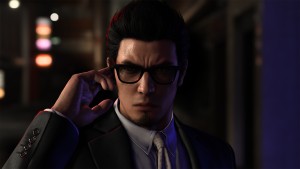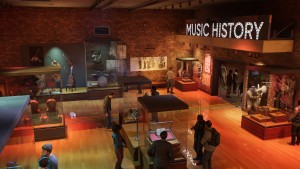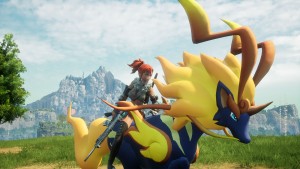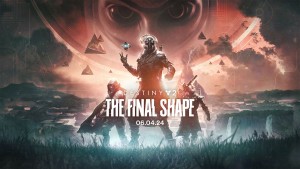NBA 2K18 Review

Driven by fearless ambition and a willingness to push the boundaries of sports video games, Visual Concepts’ NBA 2K series has arguably been the most impressive sports franchise of the last two console generations. Its commitment to world-class visuals, sophisticated gameplay, and a breadth of compelling modes makes it a sales goliath year in and year out. NBA 2K18 follows in that grand tradition by further innovating on several fronts.
At first glance, not much has changed in the minute-to-minute basketball experience outside of another layer of sheen on the already gorgeous graphics, but the more time you spend chucking up threes and pounding the paint, the more the subtle gameplay changes rise to the surface. Chief among them is a reworked motion system that makes it easier to blow by defenders when you’re controlling an elite guard. Dribble moves still help open windows for drives to the basket, but speedy guards like Russell Westbrook can also take lesser defensemen right from the first dribble. Big men feel more powerful as well, easily backing down smaller defenders when screen switches create exploitable mismatches.
The new shot meter feedback system, which communicates how well you timed your release and how contested your shot was, is another welcome inclusion. I just wish it extended to lay-ups as well, because my slashing guard had an inexplicable amount of easy baskets clank off the rim. My timing must be off, but with no feedback system I have no way of correcting my release.
Other small tweaks improve play, like livelier loose balls and a new passing mechanism that lets you hold down the button to bypass a nearby teammate and target a shooter in the far corner. This five-star gameplay only has a few weaknesses. It’s still too easy to overcommit when guarding human players, and far too many clipping animations appear all over the court, from one-on-one situations above the key to slashing through defenders in the paint.
Over the last several years, 2K has expanded off-court activities in its popular MyCareer mode to include hangouts with NBA stars, fictitious characters, gym workouts, and the like. This year, Visual Concepts takes this progression to its inevitable conclusion with the introduction of The Neighborhood. This GTA-style urban social hub serves as the centerpiece for the entire mode. From this small city block, you can head to your NBA training facility for practice, visit the fitness center to improve your stamina, enter an arena for a Pro-Am game, or get next on the street courts of The Playground. On your way to these various activities, you can stop to shop at a various apparel stores, get inked at the tattoo parlor, or even get your hair cut and shoot the breeze at the barbershop – all of which cost VC, the in-game currency you earn through performances on the court.
This hub is a strong concept, but its execution leaves much to be desired. With only a handful of NPCs on site, the people-watching is limited to other MyPlayers, most of who are standing around like zombies on their phones. The inactivity gives The Neighborhood an unintended 28 Days Later feel; if the streets aren’t disquietingly barren, they are mildly populated with people standing around. The mode could use an injection of interesting NPCs to liven up the streets and more shortcuts for users to load into specific locations, which could help trim the dead time between activities.
Most years, the MyCareer mode is driven by the NBA experience and accompanying story mode. This year, 2K loosens up the format to let you optimize your experience. The game still tells a coming-of-age story about an NBA longshot, complete with 2K’s now-trademark annoying secondary characters, social interactions with pro players, and endorsement deals. But if you prefer the spirit of competition in the 5v5 Pro-Am or street games, you can skip the NBA life altogether. The new player progression system allows you to grind for attribute gains and skill badges no matter where you hoop, wisely freeing players to concentrate on the modes they like best.
Player progression benefits greatly from the new archetype system, which allows you to choose two primary attributes that define your playing style. This affords much more customization than last year’s rigid system. More importantly, the subsequent leveling system returns to allowing users to upgrade the skills they want; no more pouring VC into predetermined skill buckets like the past few 2K games. You still earn the bonus-oriented badges by performing specific feats on the court, but Visual Concepts finally acquiesced and allowed users to track their progression to unlocking these valuable traits. Better yet, you can specify which badge you want to improve during practice and focus on drills that best benefit that goal.
Unfortunately, developing a decent player still takes a considerable amount of time given your 60-overall starting rating. The progression feels natural during the NBA experience since you are an undrafted free agent, but given the amount of people who spend money for VC to upgrade their characters in online play, you are at a significant disadvantage in competitive situations for some time. This arbitrarily low rating also discourages experimentation in creating multiple characters. I would love to have a big man alternate to pair with my slashing wingman, but developing another low-rated player to respectability is too time consuming. I wish 2K had a respec system that allowed you to pour the attributes points you already purchased for one player class into another, unlocking overlapping badges you have already earned for your new character as well. This would go a long way to making the natural progression feel more valuable.
The MyCareer story doesn’t deliver, but Visual Concepts integrated a narrative into the sim-focused MyGM mode for the first time ever. Dubbed “The Next Chapter,” the story puts you into the penny loafers of a former NBA star who blew out his knee and subsequently transitioned into management. As the new general manager of a team of your choice, you face Machiavellian behind-the-scenes scenarios that test your loyalties and force you to protect your turf as the primary shot-caller when it comes to roster creation. The story only lasts one season, and the crude cutscenes are tough to watch (not even politicians wave their hands that much during conversation), but I found the rollercoaster ride a compelling addition that puts you into the kind of sports drama you only hear about in rumor mills or on 30 for 30 episodes.
The rest of MyGM/MyLeague is still the most compelling franchise mode in sports, but it could use stronger team-building A.I. for the computer-controlled franchises. Imbalanced rosters, curious draft pick hoarding with no clear end game, and boneheaded A.I. trades were the order of the day for most of my seasons. The new CBA rules related to cap holds also appear to be broken at the moment, so I hope 2K addresses this in an upcoming patch.
Fans of collectible card modes have a lot of new elements to explore this year with MyTeam. The new coach proficiency system governs the type of players who best fit your scheme, which is another critical element to consider when building your fantasy lineup. The new Super Max challenge, which uses salary cap restrictions for roster creation, creates an interesting new playing field for those sick of going up against all-world lineups. My biggest MyTeam gripe pertains to the ridiculously short contracts; with only three- and four-game contracts available to me, I constantly felt the need to invest in contracts rather than spending money on attaining new players. Compared to Ultimate Team modes in EA Sports games, the balance feels off. The mode could also use more diversity in the types of packs available for purchase.
Sick of playing against super teams like the Golden State Warriors in online games? NBA 2K18 adds All-Time franchise teams to the mix, dramatically increasing the number of teams available for those who want to compete with the best rosters. Some legends like Moses Malone and Reggie Miller are noticeably absent, but the teams are still a blast to play with.
Servers have never been 2K’s strong suit, and stability problems once again try to box out NBA 2K18. Most every Playground game I played was marred by lag, which compromises the fidelity of control the play demands. I heard bouncing basketballs in the streets and shots clanging off the hoops at the 2K Zone even though no one is visible, leading me to believe either the Neighborhood is haunted by the ghosts of hoopers past or the servers are awry. Other users have reported losing their MyPlayer characters and all the VC they purchased as well. I didn’t experience these server hiccups when playing Pro-Am, MyTeam, and Play Now games.
Not all the shots NBA 2K18 takes are swishes, but its shooting percentage is high enough to once again recommend you step on the hardcourt. The deep MyGM, MyCareer, and MyTeam modes offer hundreds of hours of compelling play, and the on-court action is once again stellar. Once the servers stabilize and Visual Concepts patches in some easily correctible fixes, NBA 2K18 should once again be in pole position for sports game of the year.










